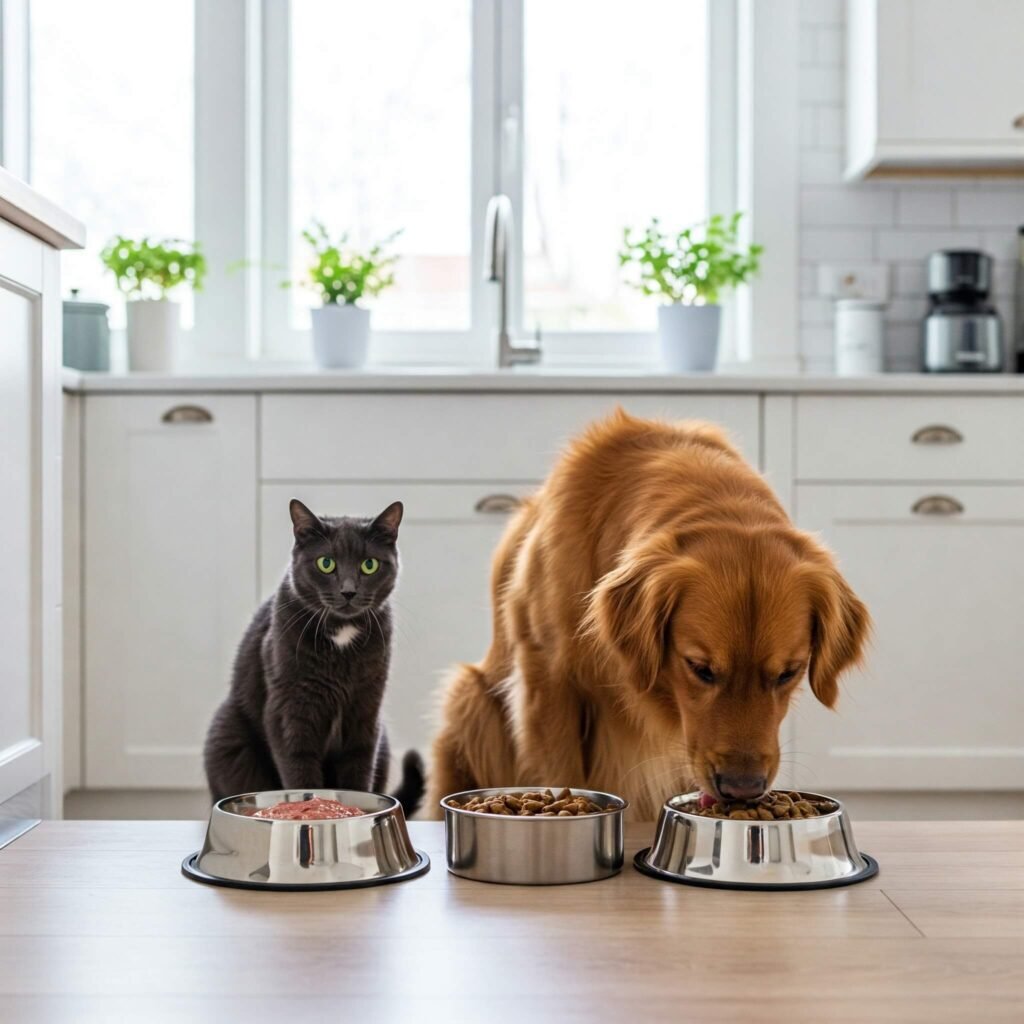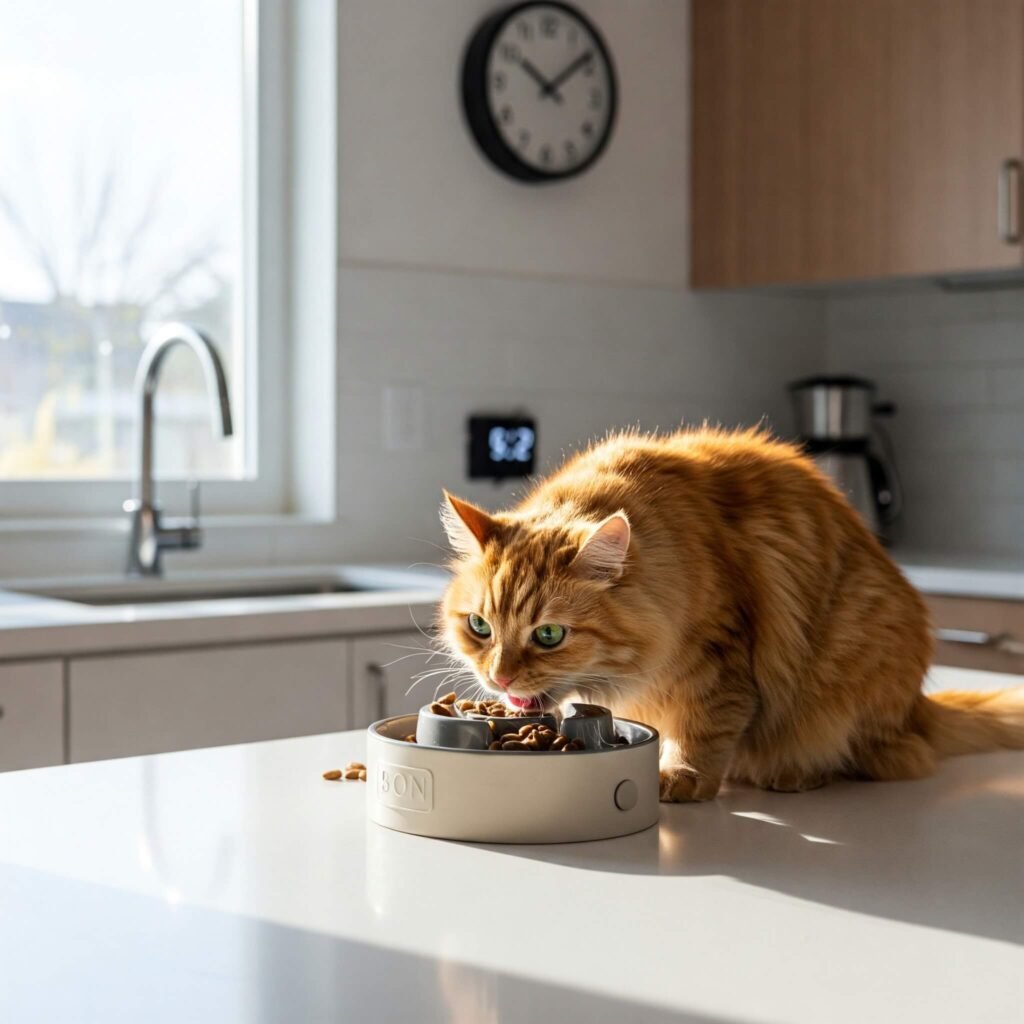Why Proper Feeding Matters for Pet Health
Feeding your pet the right food in the right amounts is critical for their long-term health. According to the American Veterinary Medical Association (AVMA), improper nutrition contributes to 25% of pet health issues, including obesity and diabetes. Avoiding the top feeding mistakes pet owners make ensures your pet gets the nutrients they need without risking preventable conditions.
This guide covers:
- Common feeding errors and their consequences.
- Practical tips to correct these mistakes.
- Vet-recommended products and strategies for balanced nutrition.

Top Feeding Mistakes Pet Owners Make
Here are the top feeding mistakes pet owners make, based on veterinarian insights, pet owner feedback, and industry research. Each mistake includes actionable solutions to get your pet’s diet back on track.
1. Overfeeding: The Biggest Feeding Mistake Pet Owners Make
Overfeeding is the most common error, leading to obesity in 59% of dogs and 52% of cats, per a 2021 Banfield Pet Hospital study. Extra treats or oversized portions add up quickly.
- Why It’s Harmful: Excess weight strains joints, increases diabetes risk, and shortens lifespan.
- How to Avoid It:
- Measure portions using a kitchen scale or measuring cup, following your pet food’s feeding guide.
- Limit treats to 10% of daily calories (e.g., Greenies Dental Treats).
- Consult your vet for a tailored feeding plan based on your pet’s weight and activity level.
Real-World Example: When Sarah noticed her Labrador gaining weight, she switched to measured portions of Hill’s Science Diet Adult and cut treats in half. Her dog lost 10 pounds in six months!
2. Choosing Low-Quality Pet Food
Not all pet foods are created equal. Cheap foods often lack essential nutrients and contain fillers like corn or soy, which offer little nutritional value.
- Why It’s Harmful: Poor-quality diets can cause skin issues, digestive problems, and long-term deficiencies.
- How to Avoid It:
- Look for foods meeting AAFCO standards, with meat as the first ingredient.
- Choose brands like Blue Buffalo Life Protection or Royal Canin.
- Avoid foods with artificial colors, flavors, or excessive fillers.
Actionable Tip: Check your pet food’s ingredient list. If “chicken by-product meal” or “corn gluten” is near the top, consider upgrading to a higher-quality option.
3. Feeding Human Food: A Risky Feeding Mistake
Sharing table scraps like chocolate, grapes, or fatty meats can be toxic or cause digestive upset in pets.
- Why It’s Harmful: Human foods can lead to pancreatitis, obesity, or poisoning. For example, onions- How to Avoid It:
- Stick to pet-safe treats like carrots or green beans for dogs, and avoid toxic foods (see ASPCA’s toxic food list).
- Train your pet to avoid begging with commands like “leave it.”
- Keep human food out of reach during meals.

4. Ignoring Life Stage and Breed Needs
Feeding the same food to a puppy, adult, or senior pet ignores their unique nutritional needs. Similarly, breeds like large dogs or hairless cats have specific requirements.
- Why It’s Harmful: Inappropriate diets can stunt growth in puppies or exacerbate health issues in seniors.
- How to Avoid It:
- Choose life-stage-specific foods, like Purina Pro Plan Puppy or Royal Canin Aging 12+.
- Research breed-specific needs (e.g., joint support for large breeds with Wellness Core).
- Adjust diets as your pet ages, consulting your vet.
5. Free-Feeding: A Common Feeding Mistake Pet Owners Make
Leaving food out all day (free-feeding) leads to overeating and makes it hard to monitor appetite changes, a key health indicator.
- Why It’s Harmful: Free-feeding contributes to weight gain and masks illnesses like dental pain or kidney disease.
- How to Avoid It:
- Feed scheduled meals (2–3 times daily for dogs, 3–4 for cats).
- Use a slow feeder like the Outward Hound Fun Feeder to prevent gulping.
- Remove uneaten food after 20 minutes to establish a routine.
Real-World Example: My friend’s cat gained weight from free-feeding. Switching to three scheduled meals with a slow feeder helped her slim down and become more active.

How to Correct Feeding Mistakes Pet Owners Make
To avoid the top feeding mistakes pet owners make, follow these steps for a balanced, healthy diet:
- Consult Your Vet: Get a personalized feeding plan based on your pet’s age, weight, and health conditions.
- Measure Portions: Use a scale or measuring cup to avoid overfeeding, adjusting as needed for weight control.
- Choose Quality Food: Invest in AAFCO-approved foods with high-quality ingredients tailored to your pet’s needs.
- Monitor Health: Watch for signs of dietary issues, like lethargy, dull coat, or digestive upset, and adjust accordingly.
- Educate Yourself: Stay informed with resources from PetMD or AVMA.
Data-Driven Insight: A 2020 study in Veterinary Medicine and Science found that pets on measured, life-stage-appropriate diets lived 1.8 years longer on average than those with inconsistent feeding practices.
Conclusion: Avoid Feeding Mistakes for a Healthier Pet
The top feeding mistakes pet owners make—overfeeding, low-quality food, human food, ignoring life stages, and free-feeding—can harm your pet’s health. By measuring portions, choosing high-quality food, and tailoring diets to your pet’s needs, you’ll ensure they live a longer, happier life. Start small: swap out one low-quality food or cut treats by half, and consult your vet for guidance.

